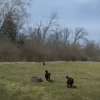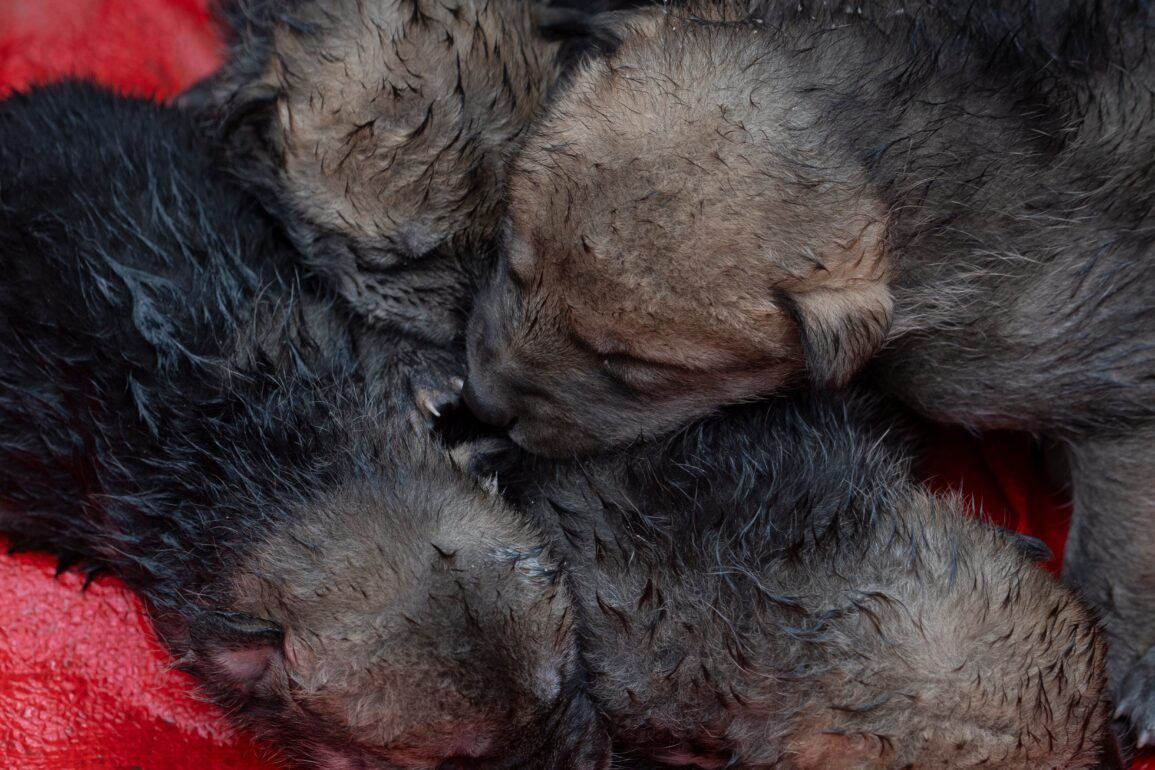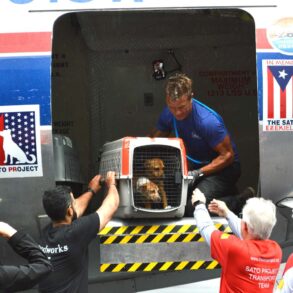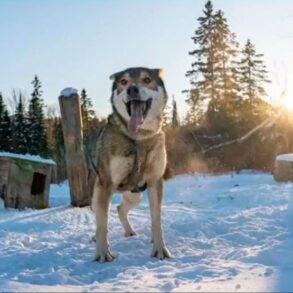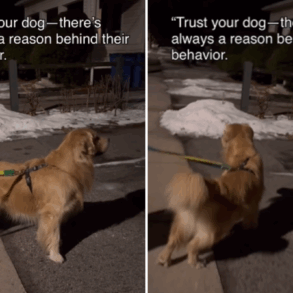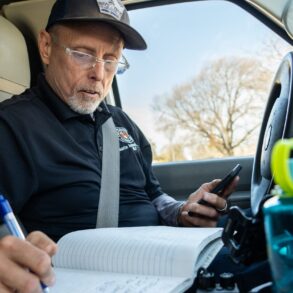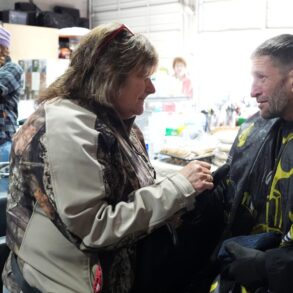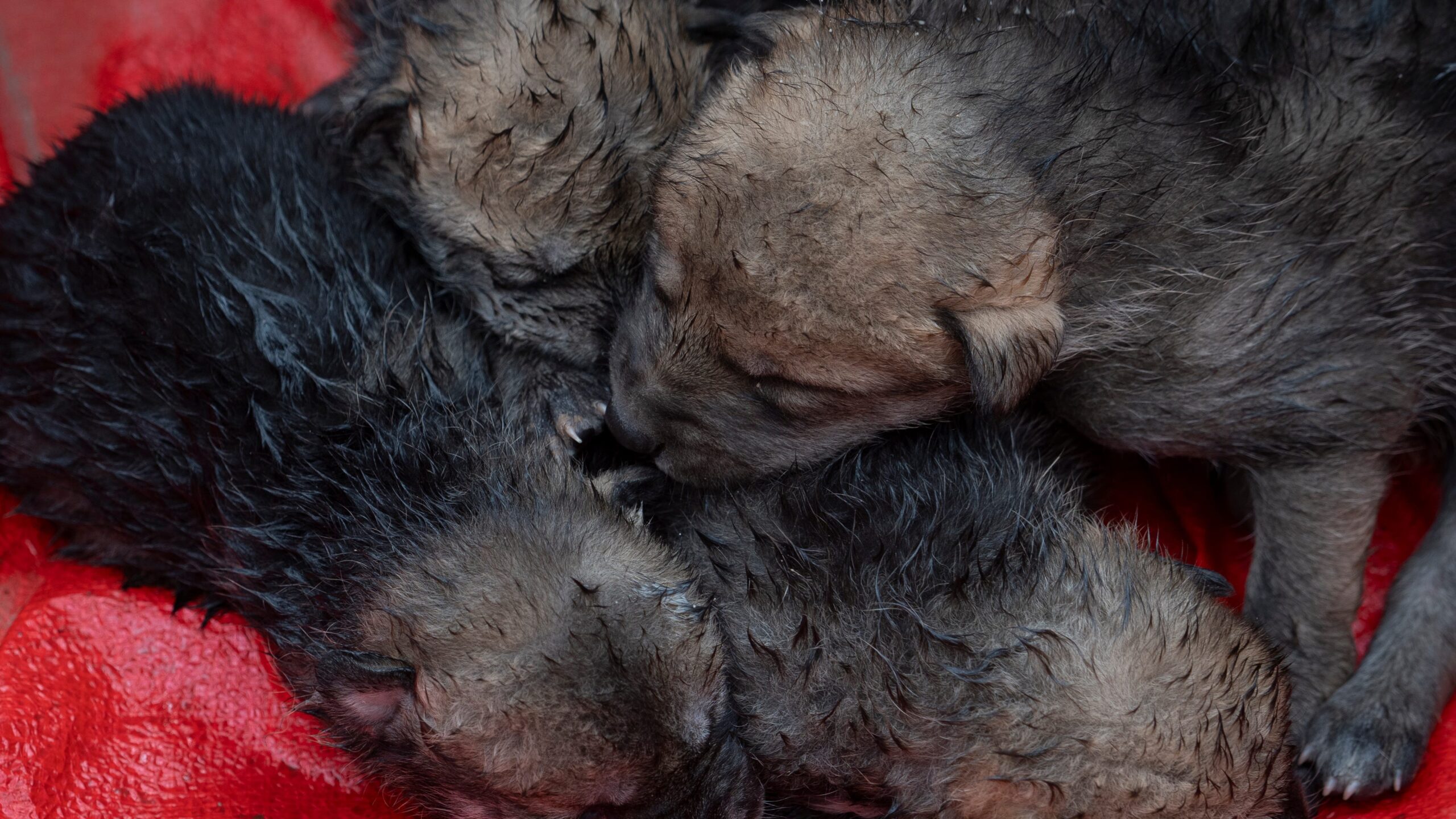
5 Mexican gray wolf puppies born in New Mexico arrive in AZ for fostering
Five Mexican gray wolf puppies (2 males, 3 female) born at the Living Desert Zoo & Gardens State Park in Carlsbad, New Mexico are fostered into two Arizona wild wolf dens.
The Arizona Republic
FLAGSTAFF, Ariz. — The endangered Mexican Gray wolf remains an ongoing conservation topic in Arizona, and during a tour by the Society of Environmental Journalists April 24, wolf advocates, wildlife biologists and ranchers talked about the challenges associated with the wolves and what can be done to protect the population.
Jim deVos, a wildlife biologist for the Arizona Game and Fish Department, has been involved in the Mexican wolf recovery for over 20 years. He walked through the wolves’ complex history and recovery status, as well as their genetic diversity.
“I believe that wolves are in much better shape genetically, because we have this lineage, this lineage and this lineage, and some years ago, they blended them together to increase the genetic diversity,” he said.
In the 2024 census of wolves, state and federal officials counted 286 individual animals.
There has been high tension with the wolves surrounding the ranching community, whose cattle have suffered losses due to predation by the animals.
Collaborative efforts have been underway with the White Mountain Apache Tribe on their 1.6 million acres of land. They work directly with U.S. Fish and Wildlife biologists and tribal leaders to figure ways of coexistence with the wolves and livestock.
Gage Hollingsworth, a wildlife biologist for Game and Fish, works with the White Mountain Apache Tribe and Fish and Wildlife under an agreement that the tribe will solely manage the wolves and monitor them throughout the year.
“One of the unique challenges that the tribe faces that the state and U.S. Fish and Wildlife don’t, is that we aren’t only managing for the wolves, we are managing for the people too.” Hollingworth said.
Sisto Hernandez, vice president of the Grasshopper Livestock Association on the White Mountain Apache reservation, works with ranchers on the land to implement non-lethal practices for the conservation of the wolves.
A “payment for presence” program is one way for ranchers to be compensated for the presence of wolves on their land.
Hernandez wondered if that idea would work with the broadening number of ranchers needing to be compensated.
“There is a challenge there, because on a smaller regional level implementing that on our tribal lands wasn’t as difficult,” Hernandez said. “I don’t want to put it out there like it was an answer for everyone, but it was an answer for our small 1.6 million acres.”
Prairie dog conservation brings a different set of issues
The Gunnison’s prairie dog is a small but vital keystone species in Arizona ecosystems.
Conservation efforts are aiming to increase the already declining population, which have been impacted by urbanization, habitat loss and diseases like the bubonic plague.
Babbitt Ranches is a huge, privately owned ranch. As part of relocation efforts, some prairie dogs will end up at the ranch, where about 850,000 acres of land is suitable habitat for the species.
Wildlife biologist Emily Renn works with the organization Habitat Harmony to relocate prairie dogs to areas such as the Petrified Forest, and where black-footed ferret reintroductions have occurred. Ferrets rely on prairie dog colonies for prairie dogs for food and shelter.
Relocating the prairie dogs in the summer months, July and August, Renn said her goal number is affected by increased hunting of prairie dogs.
“I’m trying to do 100 prairie dogs a summer,” Renn said. “And then somebody can go out and basically shoot 100 prairie dogs in the morning.”
Jessica Simmons, works for the planning department for Parks and Recreation in Coconino County. She coordinates with developers using conditional use permits to make sure that certain requirements are being met if developers want to build around areas where there are prairie dog burrows present.
“They are considered the species of greatest conservation need in all four states where they occur,” Renn said.
Another important strategy for managing Gunnison’s prairie dogs is limiting the outbreaks of diseases like the plague, which is a common cause of death in the species, by dusting burrows with a flea-killing pesticide.
Wildlife crossings increase safety for people, animals
The Arizona Game and Fish Department, in collaboration with the Arizona Department of Transportation, is working on wildlife crossings on Interstates 17 and 40 in northern Arizona.
The project is called the Northern Arizona Wildlife Connectivity Project, and it took nearly 30 years of planning for the beginning of construction on three areas. It is funded through the wildlife crossing pilot program from the Federal Highway Administration.
Scott Garlid, the executive director of the Arizona Wildlife Federation, said the federal funding needed for future wildlife crossings is frozen, as it is mainly funded on the federal level. While the future is uncertain for other wildlife crossing projects, development for the planned wildlife crossings will move forward.
“When that money is available, you want to be prepared and have your funding already approved,” Garland said. “You need to get the money there so that you’re prepared for the next opportunity.”
Jeff Gagnon is the program lead for the Arizona Game and Fish Department’s wildlife connectively program. He said the need for wildlife crossings stems from habitat fragmentation and vehicle collisions on the roads. As roads act as barriers for animals that can make it difficult to cross, an NAU study found that these barriers can alter the populations genetically.
Allowing for wildlife crossings will dispel genetic barriers on both sides of the roads, Gagnon said.
“From a gene flow perspective, it seems like the outcome is going to be pretty good,” Gagnon said.
Around 70% of collared elk did not cross the I-17 and I-40 corridors, according to Arizona Game and Fish. There have also been around 200 elk and deer per year that were killed in vehicular incidents on both the I-17 and I-40.
To guide animals, the state agency installed fencing to guide animals toward the wildlife crossings. It’s an eight-foot woven wire fence that has increased the success rate of the crossings dramatically, Gagnon said.
For example, Gagnon said for another project, there was a 98% reduction in collisions after the fences were installed.
Construction is set to start for the project in the spring of 2025.
George Headley is politics editor at The State Press at Arizona State University. Nikki Shaw is a junior at Alaska Pacific University. Both are part of a student newsroom led by The Arizona Republic.
Coverage of the Society of Environmental Journalists conference is supported by Arizona State University’s Cronkite School of Journalism, the University of Arizona, the Nina Mason Pulliam Charitable Trust and the Arizona Media Association.
These stories are published open-source for other news outlets and organizations to share and republish, with credit and links to azcentral.com.
This post was originally published on this site be sure to check out more of their content.

